The Trucker’s Hitch makes a very strong knot that connects a rope to a ring, metal pole, tree trunk, or a similar object. Its main use is to strap down loads on trucks and trailers and to secure tent guylines. It’s so popular because it creates a 3:1 mechanical advantage, allowing for easy tightening of the rope.
Because it’s so popular and has so many variations, it has a lot of different names, like the Lorry Knot, Lorry Driver’s Hitch, Hay Knot, Haymaker’s Hitch, Harvester’s Hitch, Power Cinch Knot, Dolly Knot, Wakos Transport Knot, Sheepshank Cinch, Trucker’s Dolly, and Wagoner’s Hitch.
Quick Guide: Tying a Trucker’s Hitch Knot
The main structure of the Trucker’s Hitch consists of a loop on the standing end. The working end is then looped through the anchor and back through the loop, achieving a mechanical advantage. The knot is then secured with two half-hitches.
You’ll need a rather long section of the rope to tie it. For smaller ropes, 2-3 ft (60-90 cm) should be enough. For thicker ones, you’ll need about 3-6 ft (90-180 cm).
To tie it, first tie a Directional Figure 8 Loop Knot near the end of the rope (steps 1-1a). After that, take the working end, loop it through the anchor point, and back through the Figure 8 Loop (steps 2-2a). Finally, tie Two Half-Hitches around the formed loop to secure the knot (steps 3-3c).
This knot can be tied in many variations. You can replace the top Directional Figure 8 Loop with a Slipped Overhand Knot, an Alpine Butterfly Loop, a Figure 8 Follow Through Knot, or a Bowline on a Bight.
For loads that aren’t critical, a lot of people choose to tie Slipped Two Half Hitches instead of regular ones. This allows you to quickly release the knot by pulling a string.
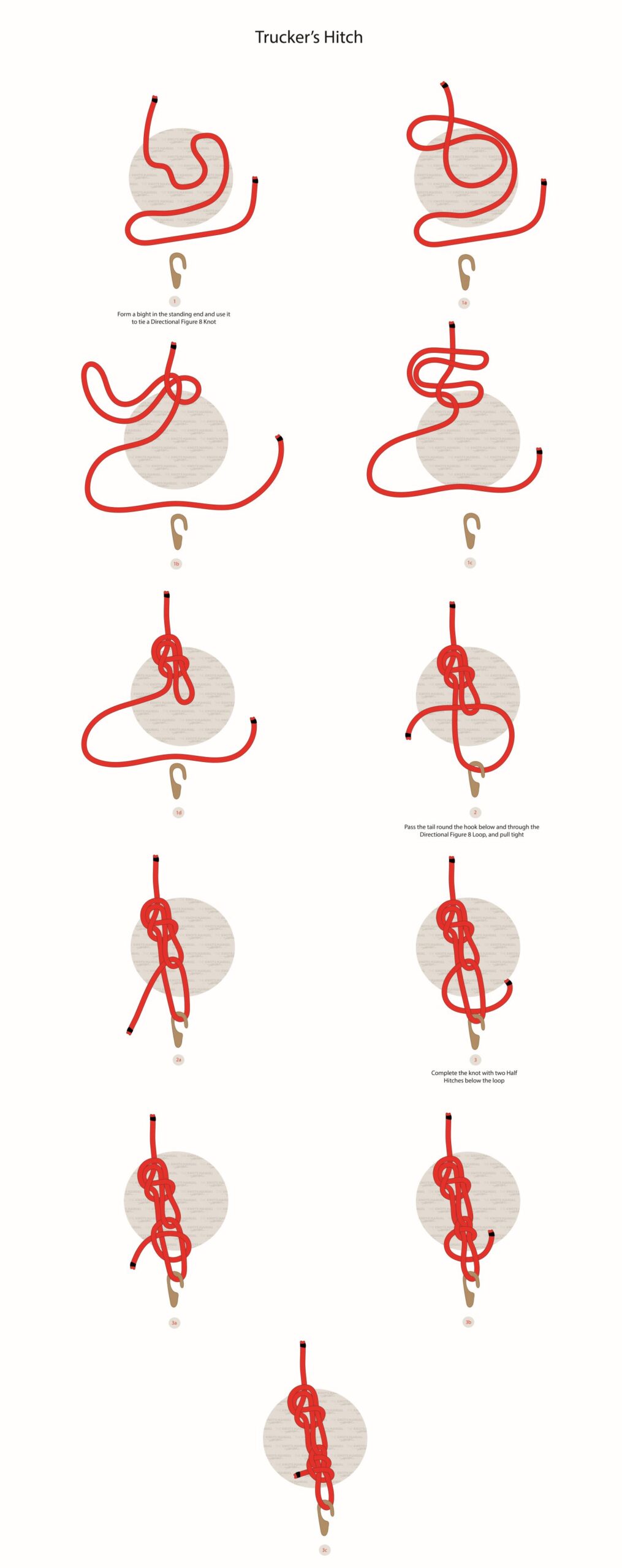
Pros and Cons of the Trucker’s Hitch Knot
The main advantage of the Trucker’s Hitch is that it gives a 3:1 mechanical advantage. This allows you to easily tighten the rope before securing it with Two Half Hitches. In reality, though, the mechanical advantage is closer to 2:1 due to the friction of the rope.
It’s also a very secure knot. It’s very unlikely to come undone if properly tightened. You can also secure it with another Half-Hitch to make it even more reliable.
At first, the Trucker’s Hitch seems difficult to tie. But if you think about how it works – it isn’t. It consists only of a single loop and Two Half-Hitches. In fact, there is a very popular parody music video made by Ylvis in 2014, called “Trucker’s Hitch“. In this video, he sings about how difficult this knot is.
One downside of the original Trucker’s Hitch is that it may loosen before tying the Two Half Hitches. This is fixed in the autolocking variant of this knot. In step 2, the working end is looped through the Directional Figure 8 Loop twice. This gives the rope some traction so that it doesn’t come loose as you secure the knot.
Another downside is that the Two Half-Hitches Knot can jam and become very hard to untie once it’s loaded with heavy weight or shock loads.
Common Uses for the Trucker’s Hitch Knot
Most commonly the Trucker’s Hitch is used to secure heavy loads on trucks and trailers. The mechanical advantage allows you to get a good amount of tension on the rope before tightening it. In fact, this is where its name comes from.
It’s also often used to secure large loads to the top of the car, like Kayaks and other boats.
And lastly, it’s also very often used in survival situations. People use it to secure tent guylines, tarp ridgelines, hammock cords, and to secure clotheslines for outdoor camping.
Knots Like the Trucker’s Hitch Knot
Auto Locking Trucker’s Hitch: A regular Trucker’s Hitch, except with one extra step. In step 2, the working end is looped through the upper loop twice. This adds some friction to the knot, so after tensioning it, it won’t come loose. This knot is preferred if you want to achieve high tension on the rope.
Taut Line Hitch: A less secure knot that’s often used in similar situations to the Trucker’s Hitch. It’s easier to tie and untie and is secure enough for simple tasks. This makes it preferable to use for tensioning and securing tent guylines.
Farrimond Friction Hitch: An even less secure tensioning knot compared to the Taut Line Hitch and the Trucker’s Hitch. Its main advantage is that it is very easy to untie. So a lot of people like to use it for simple tasks, like making temporary clotheslines.
Tensionless Hitch: Arguably, the strongest hich out there. It’s stronger because the rope enters the knot at a straight angle, achieving almost 100% breaking strength.
Directional Figure 8 Loop: This knot is used in the formation of the Trucker’s Hitch to make the upper loop.
Two Half-Hitches: This hitch is used to secure the Trucker’s Hitch Knot after tensioning the rope.
Step-By-Step Guide: How to Tie the Trucker’s Hitch Knot
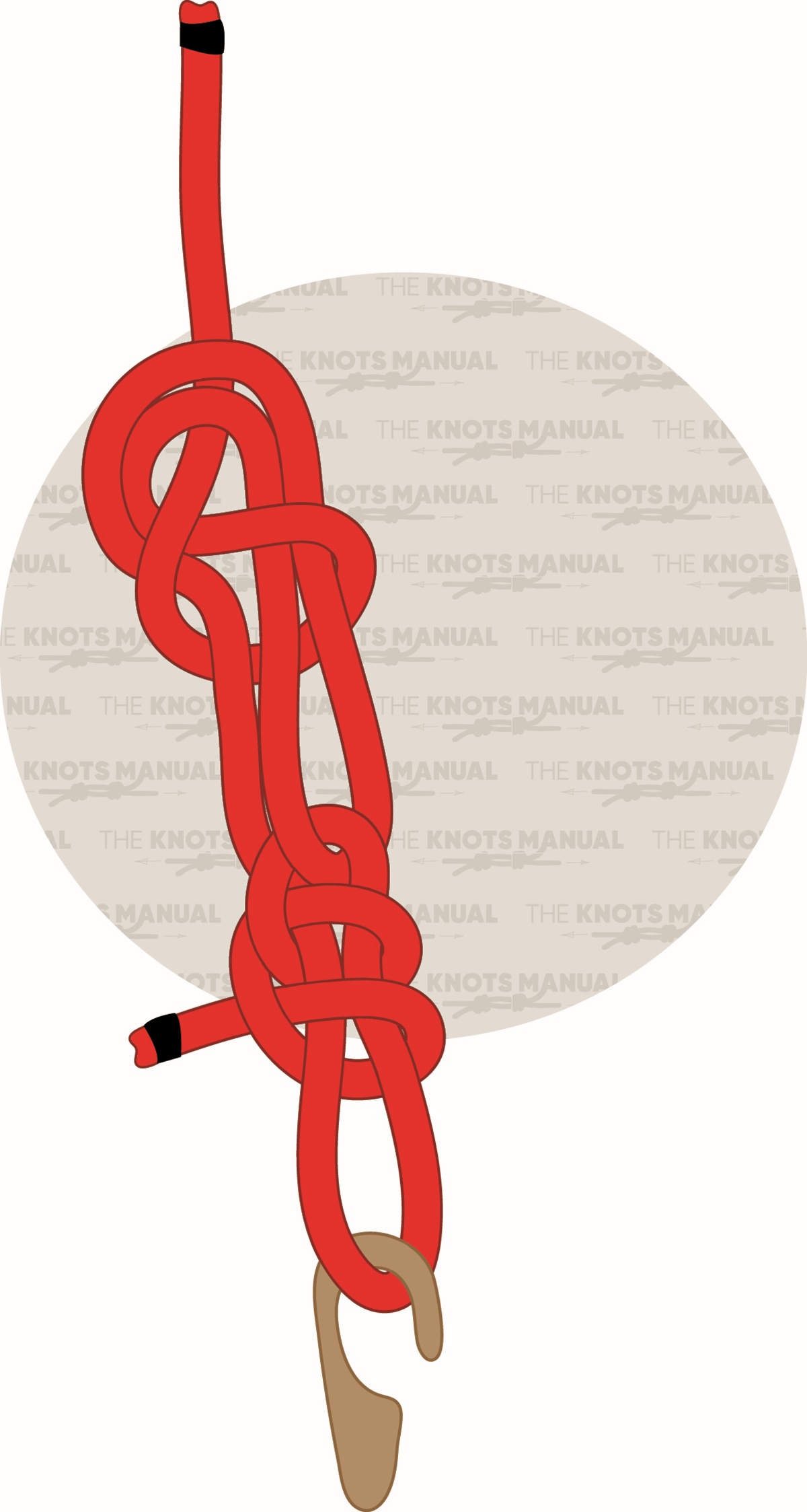
An illustrated tutorial that shows how to tie the Trucker’s Hitch Knot.
Step 1:
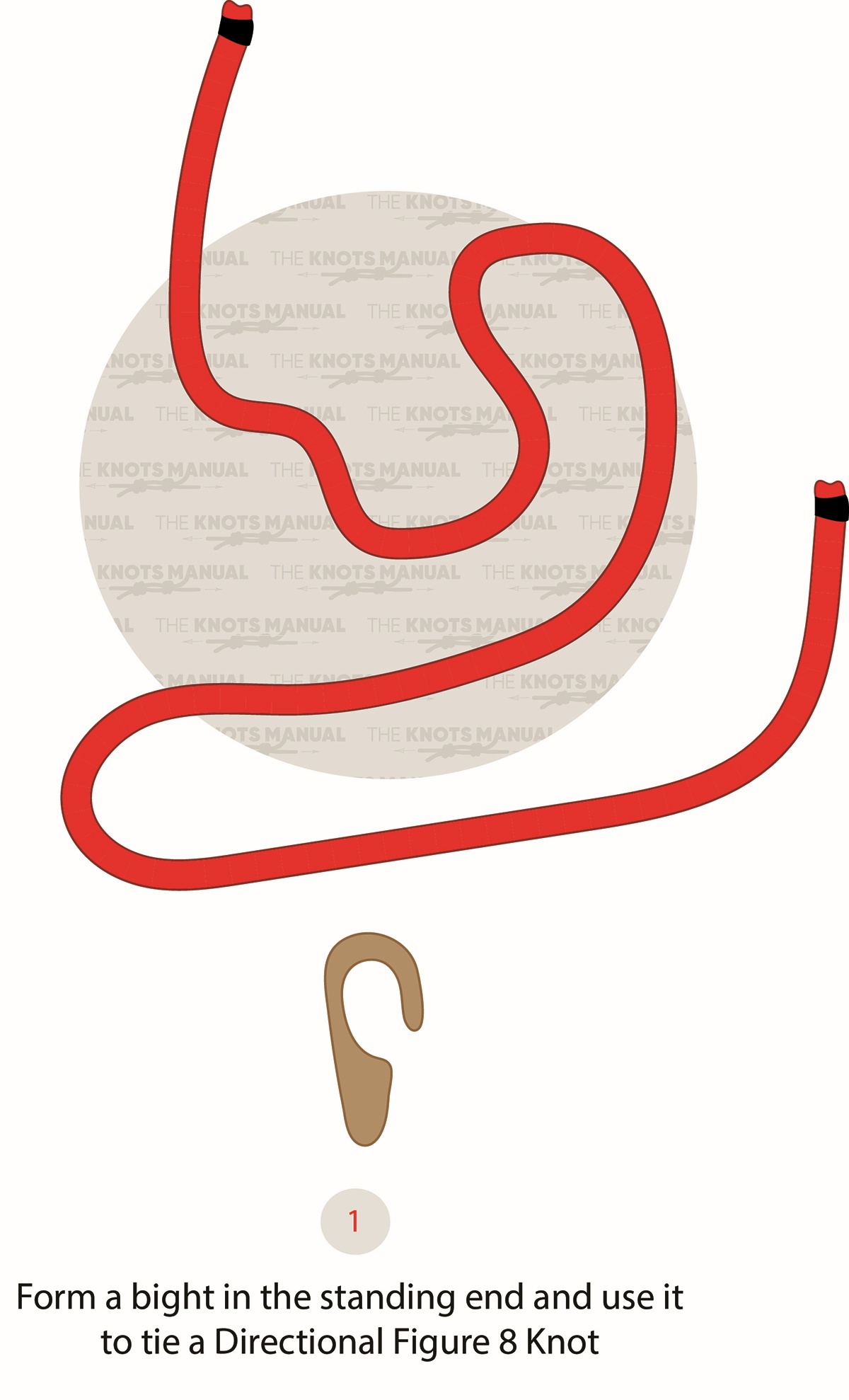
Form a bight near the end of the rope.
Step 1a:
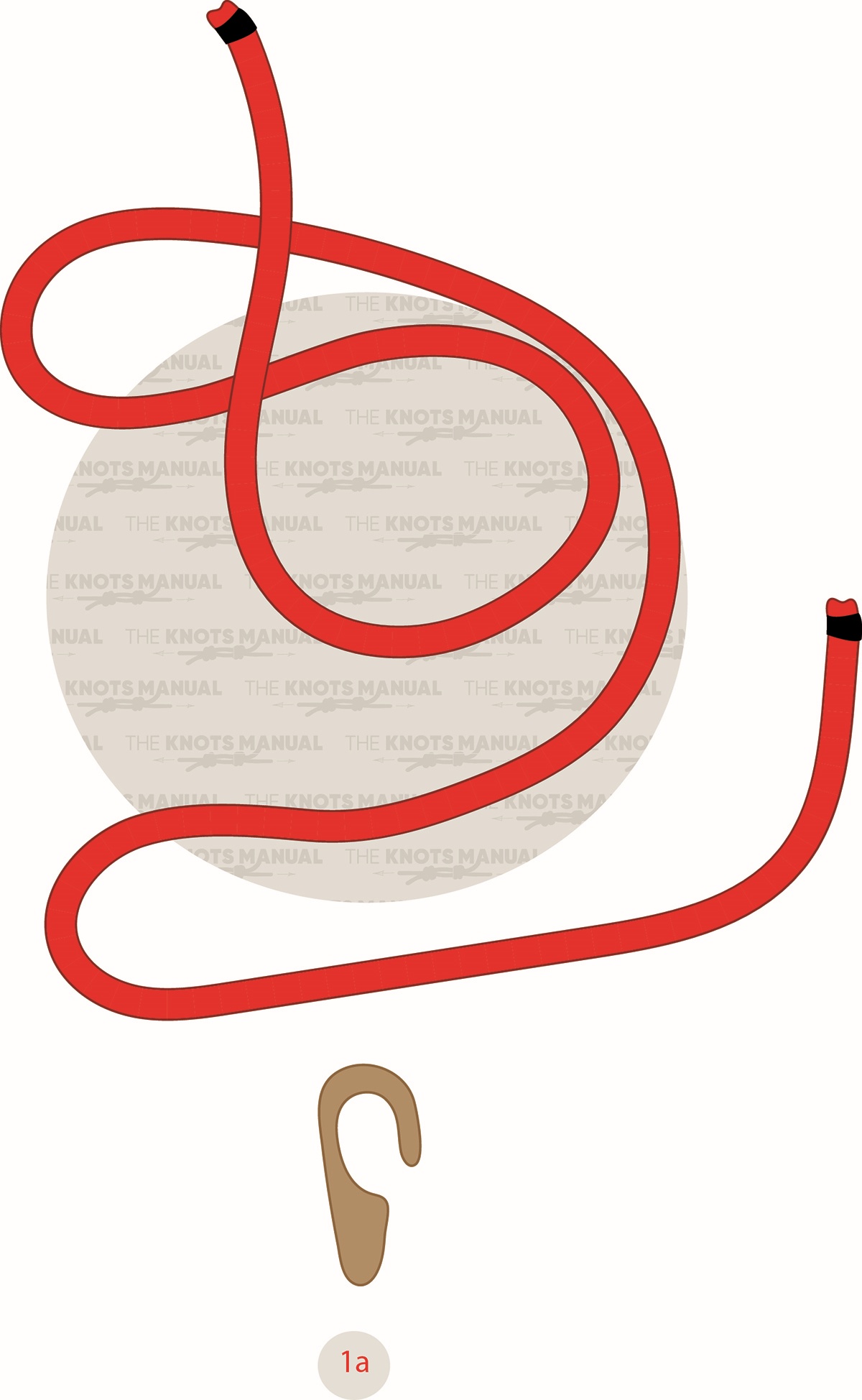
Pass the bight behind the standing end.
Step 1b:
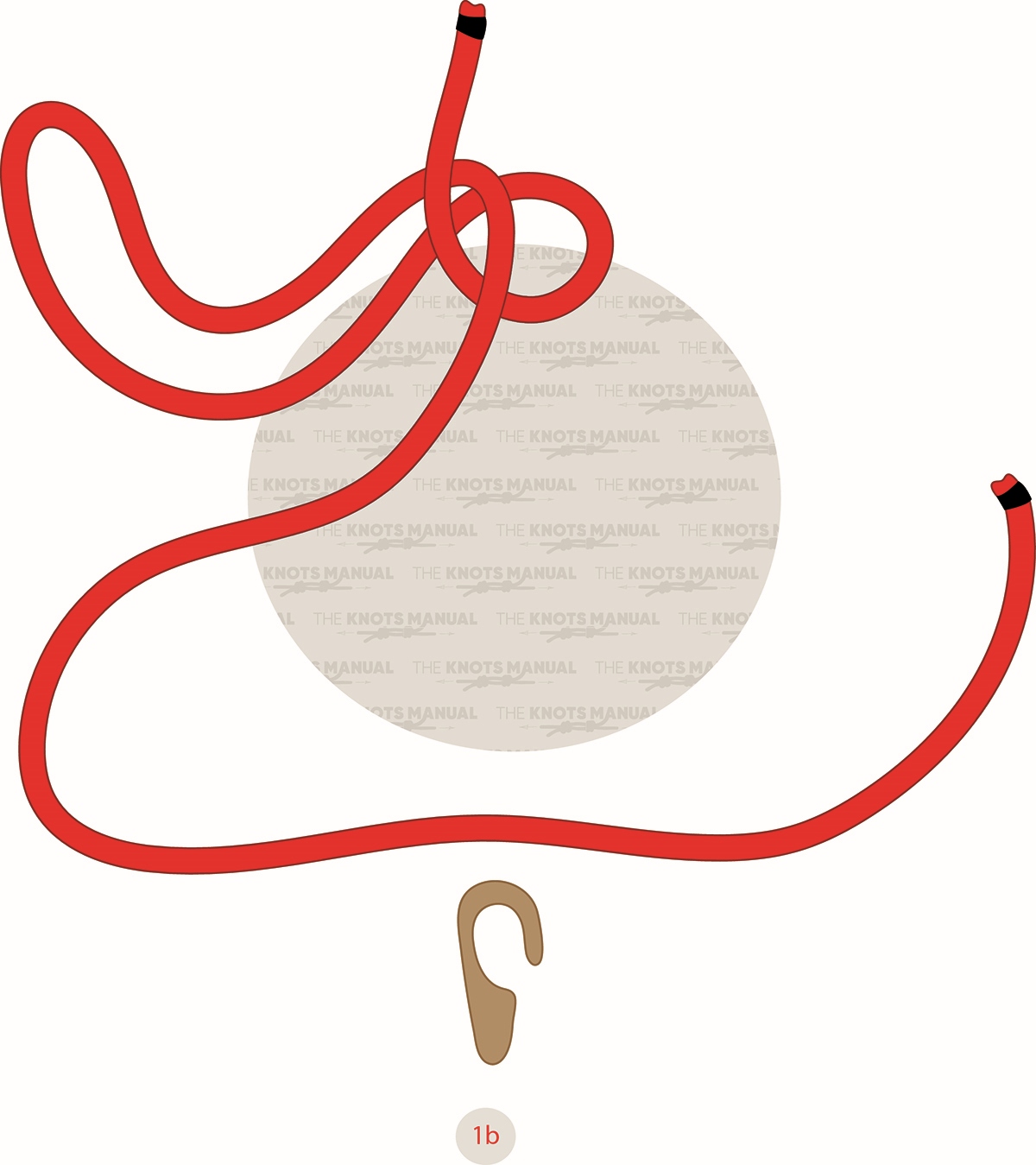
Cross the working end over the bottom loop.
Step 1c:
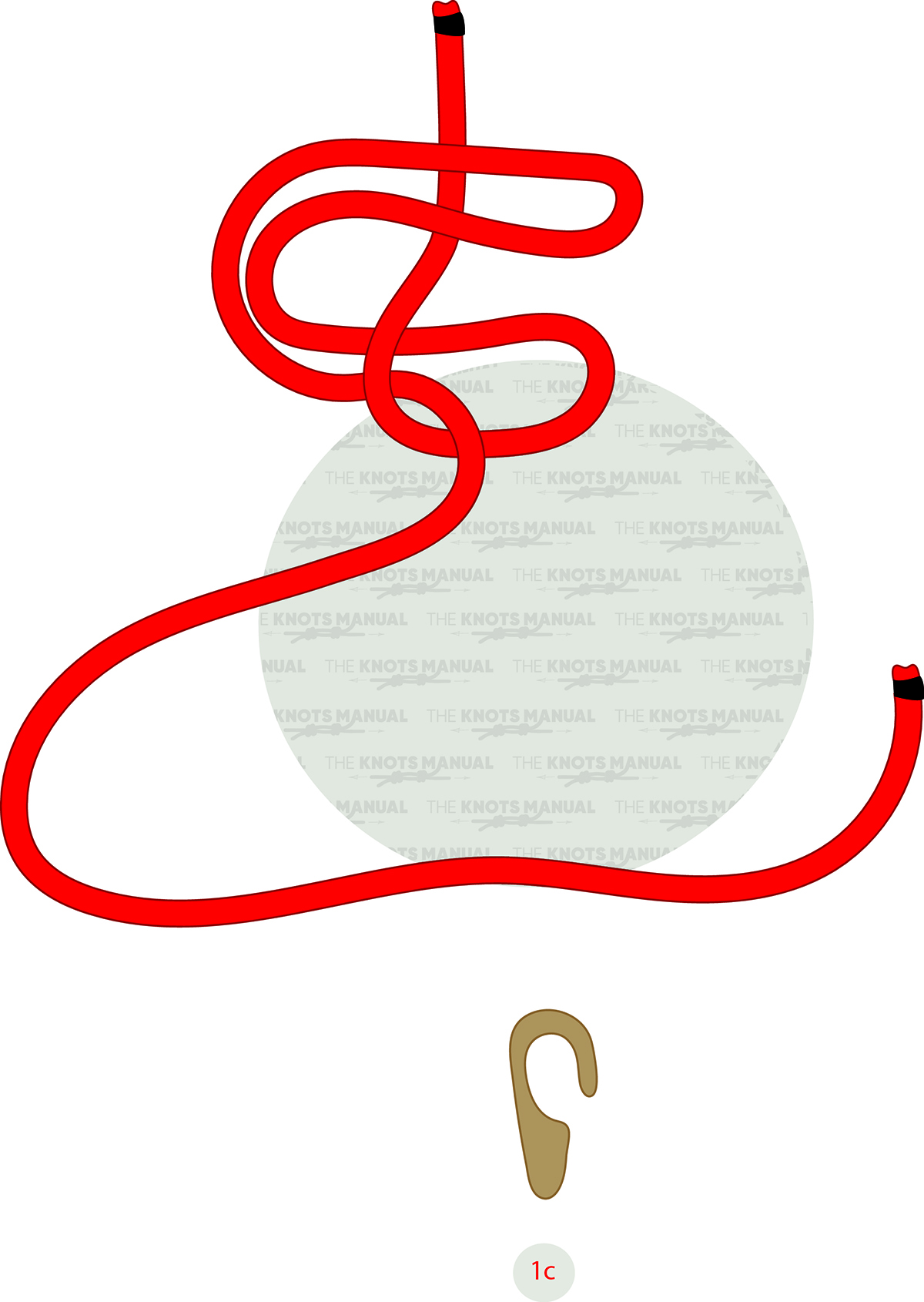
Pass the bight in front of the standing end.
Step 1d:
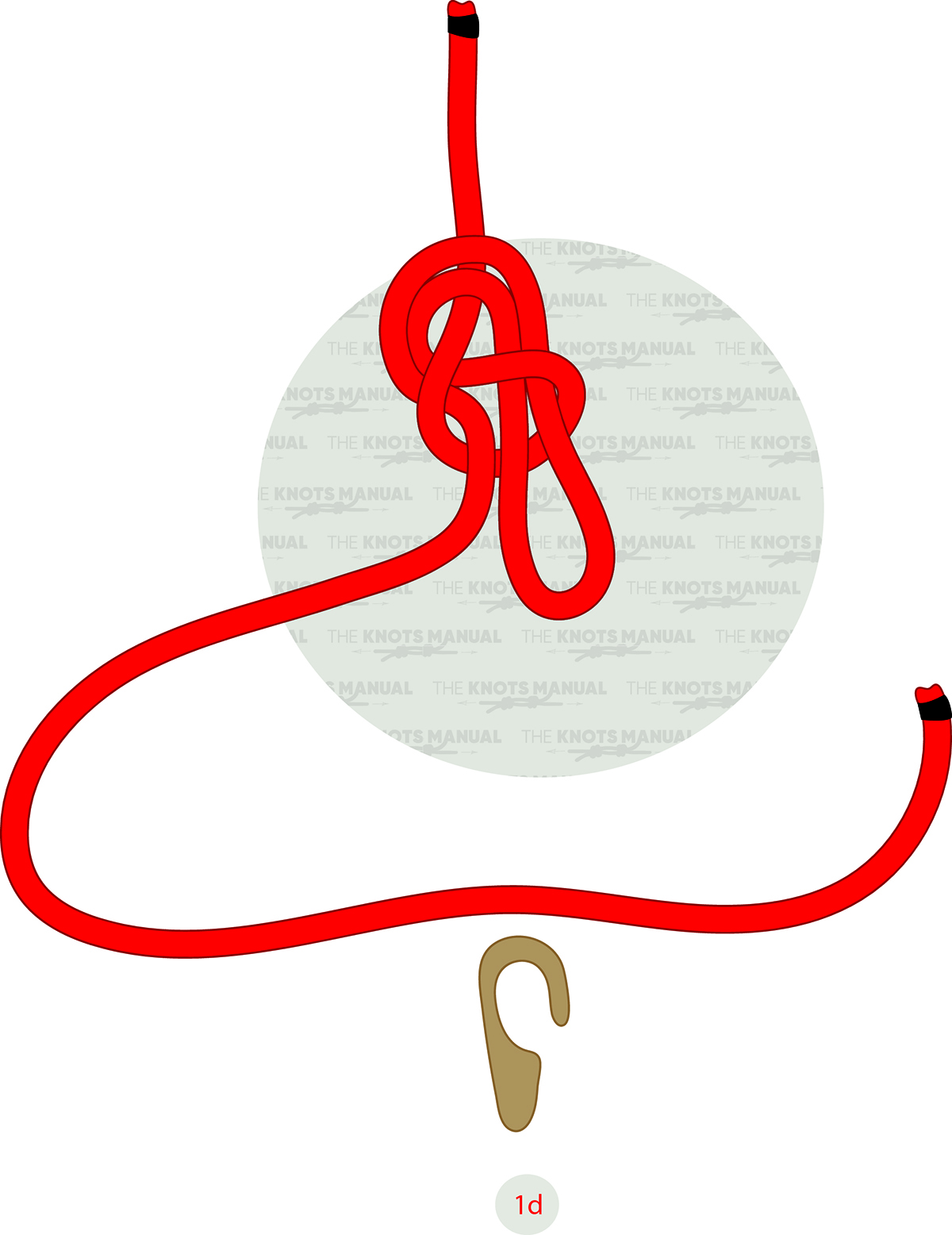
Do another half-turn with the bight, and then pass it through the bottom loop (from the back side). You’ve now created a knot called “Directional Figure 8 Loop”.
Step 2:
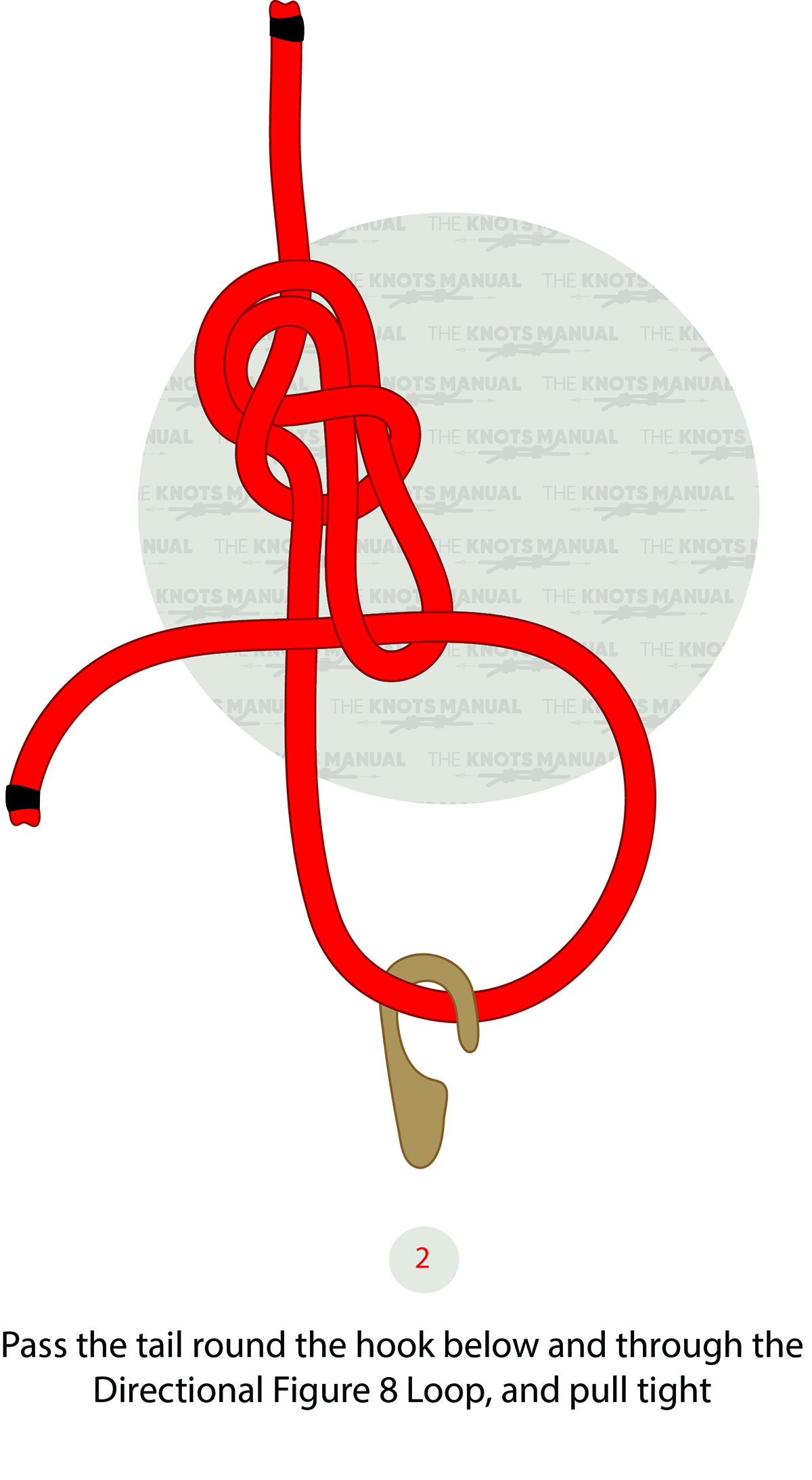
Pass the working end through the hook/carabiner/ring and back through the bottom loop, as illustrated above.
Step 2a:
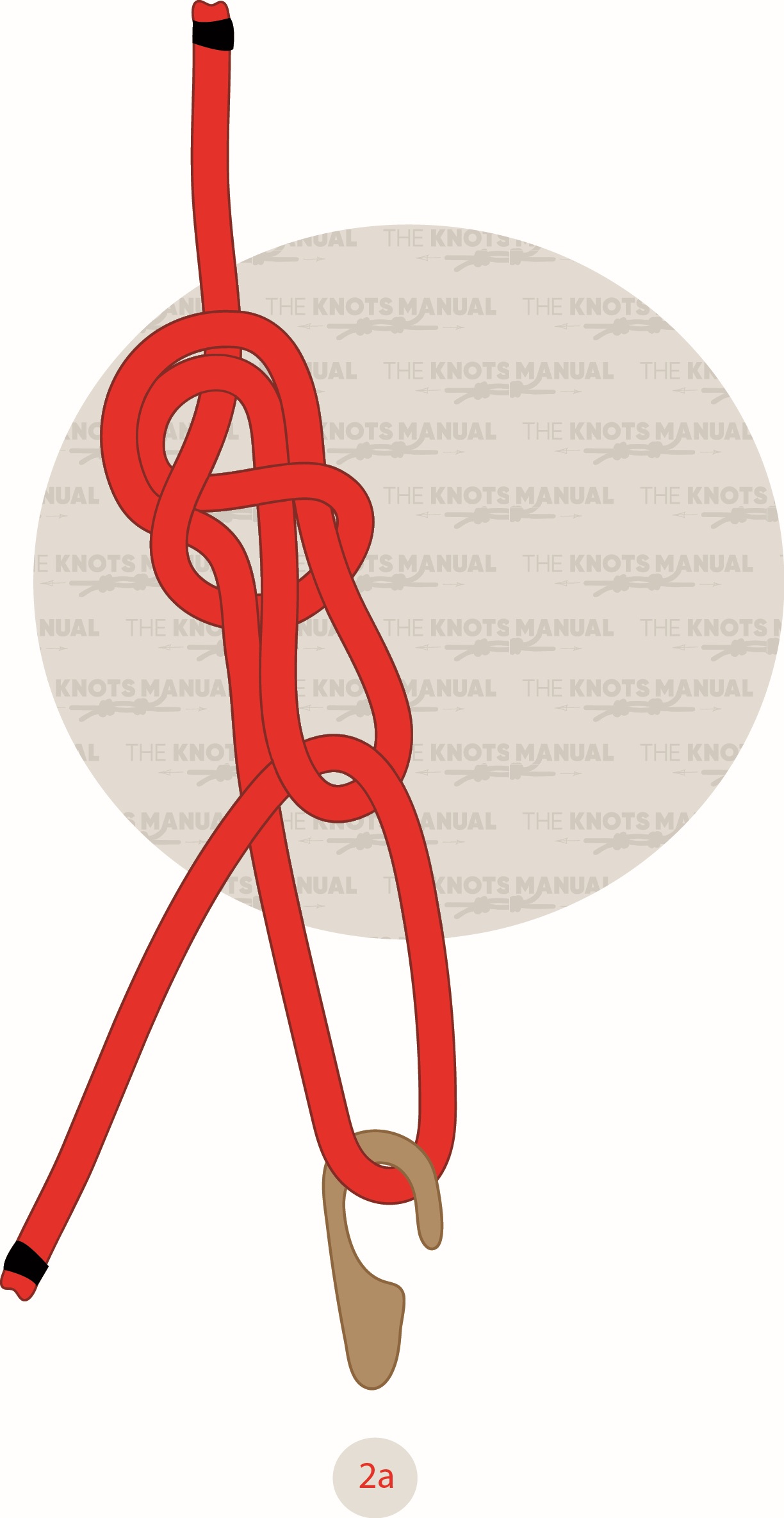
Tighten the newly-formed loop, but not too much.
Step 3:
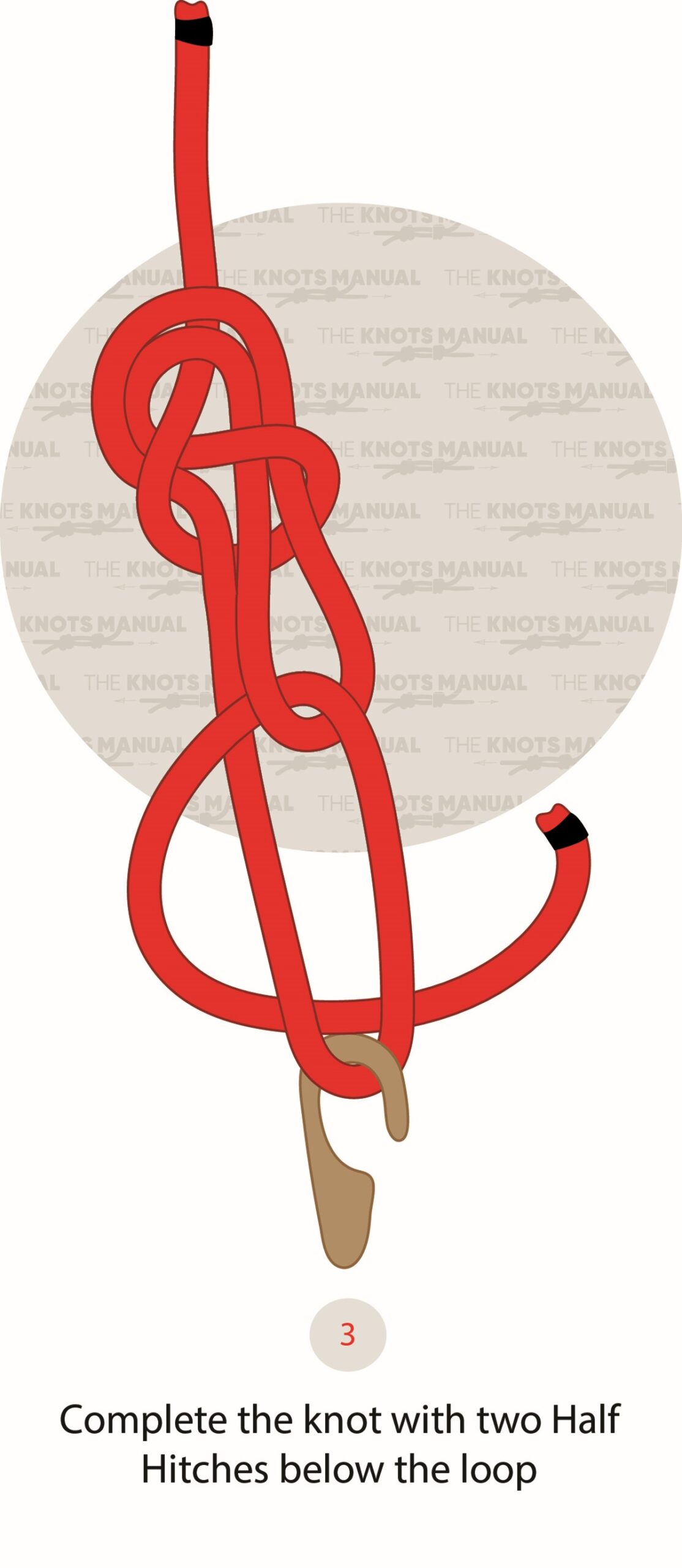
Pass the working end behind the bottom loop.
Step 3a:
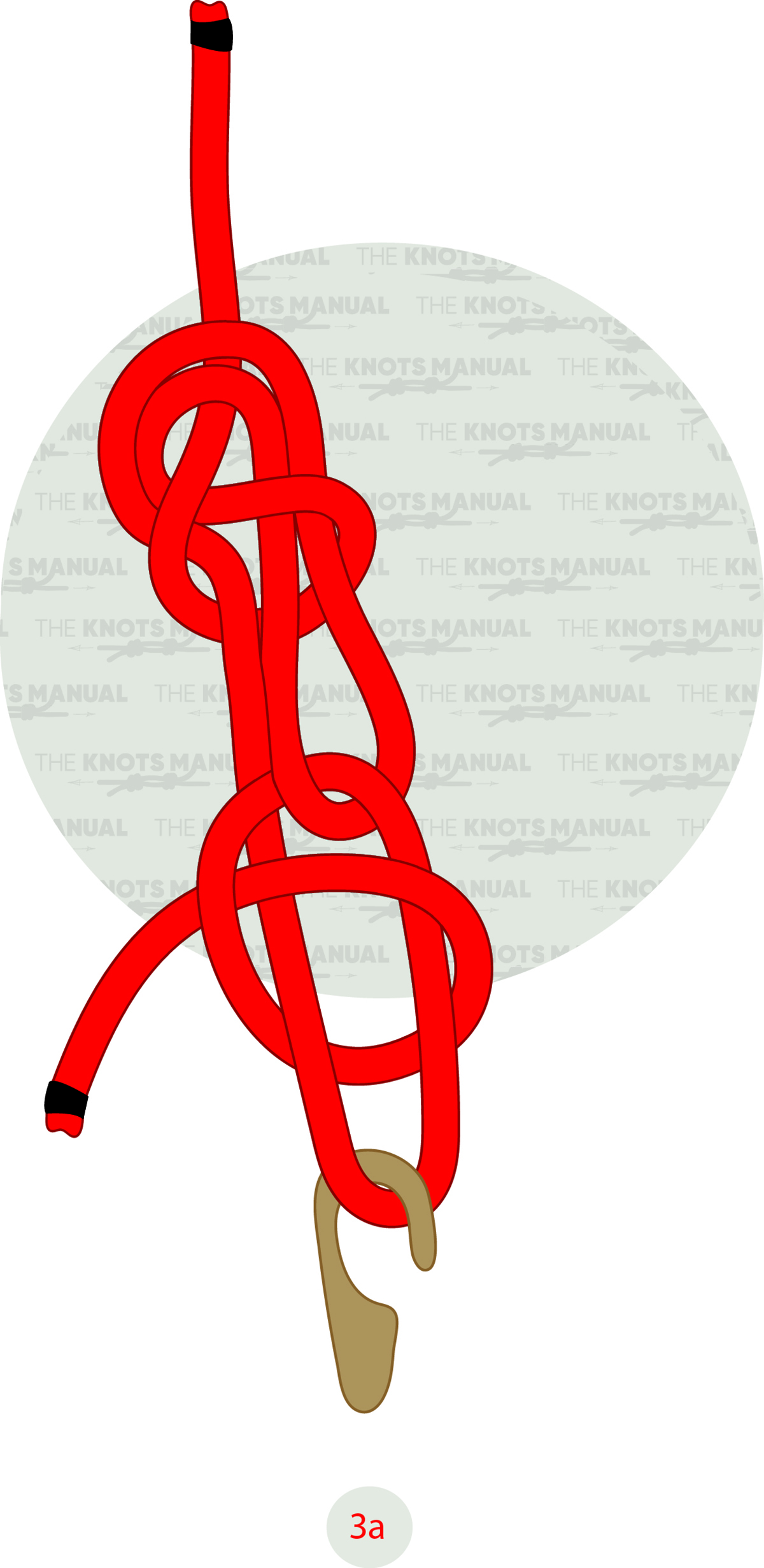
After one turn, pass the working end under itself, forming a half-hitch in the process.
Step 3b:
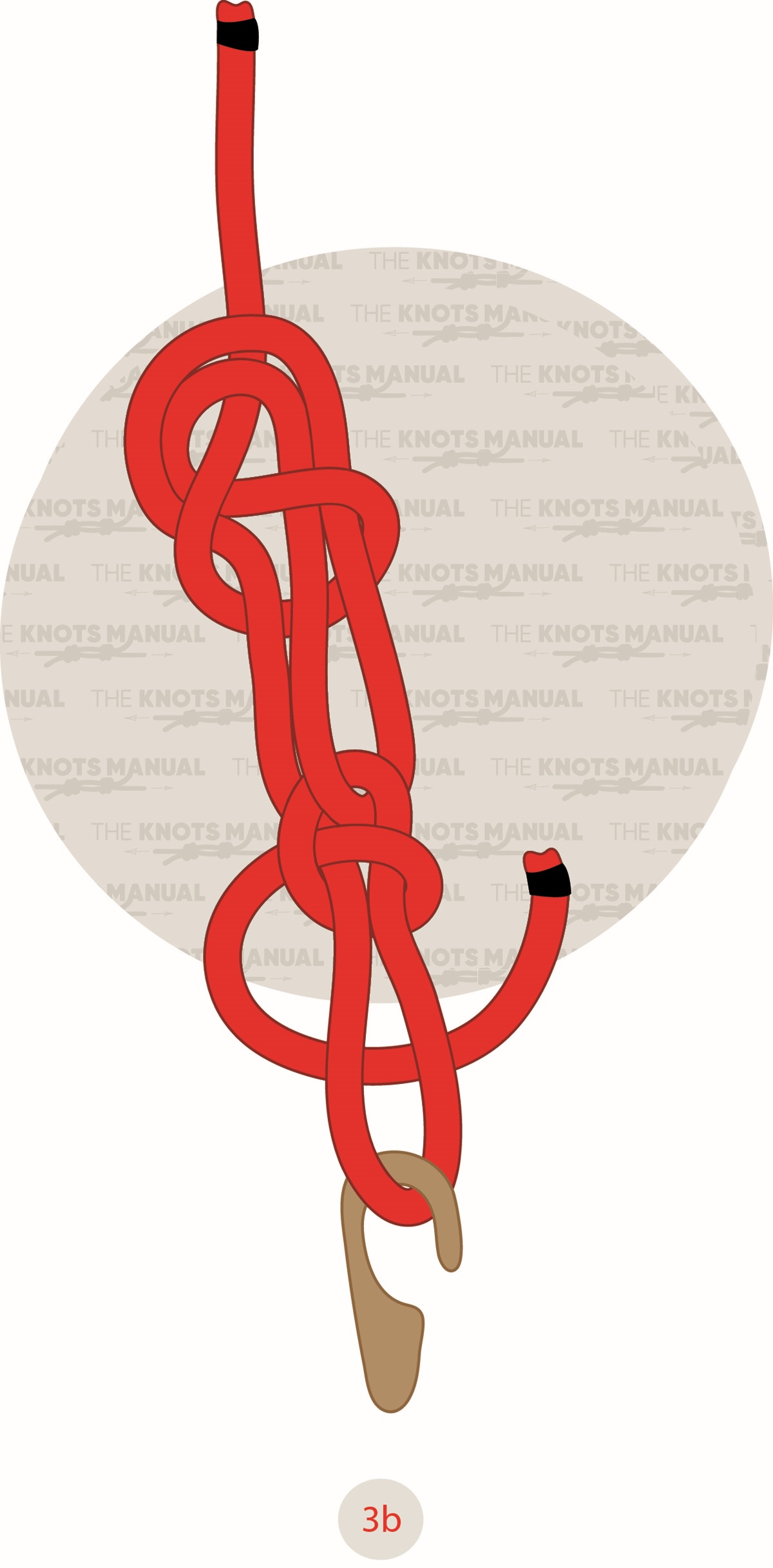
Go behind the bottom loop once again.
Step 3c:
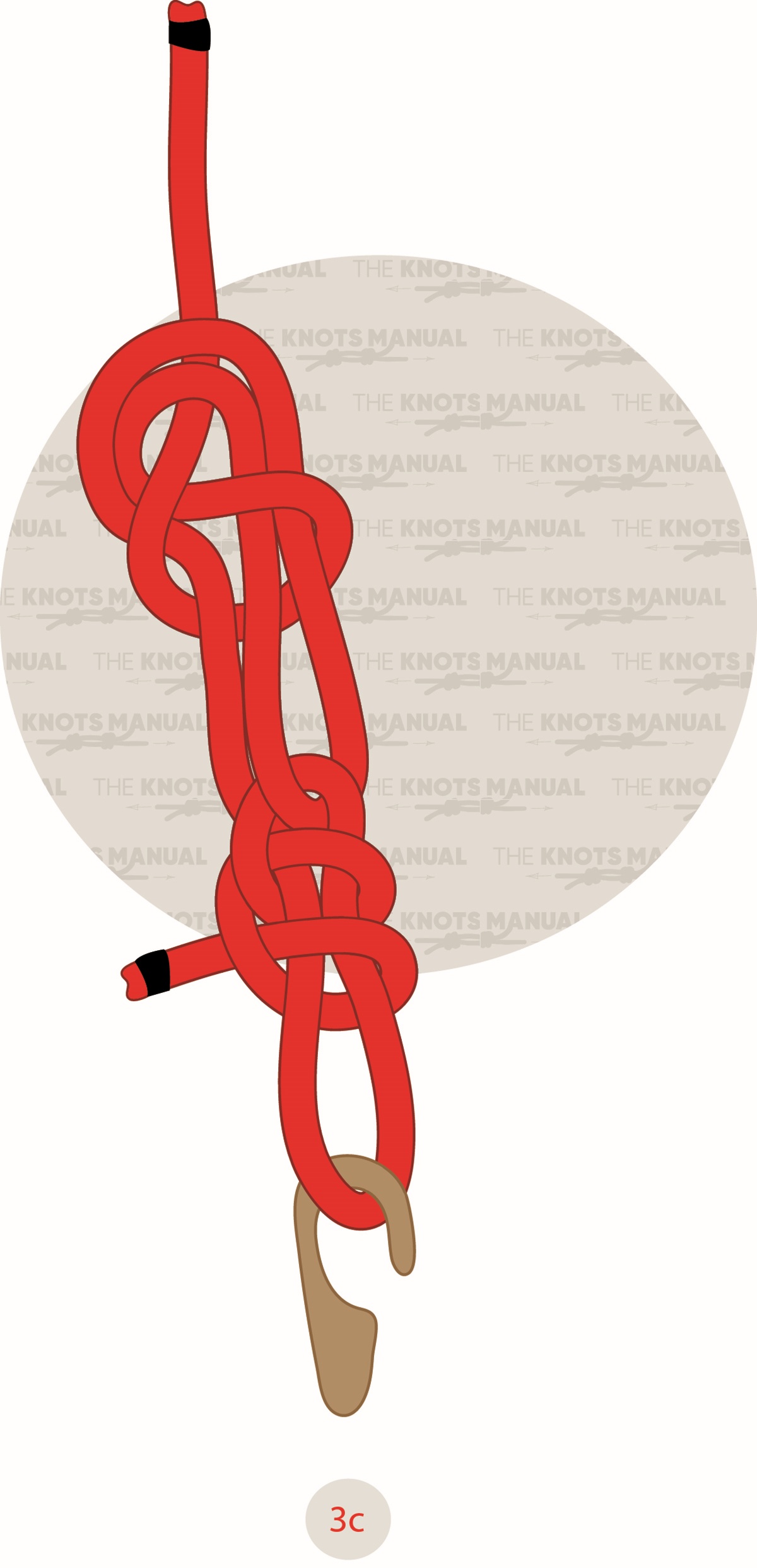
After creating the second half-hitch, the Trucker’s Knot is finished.
